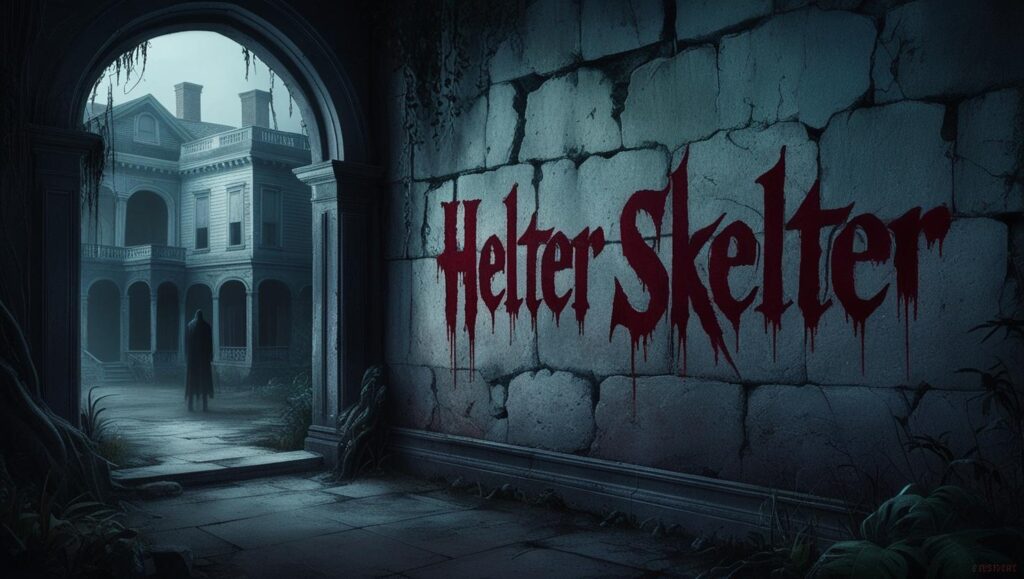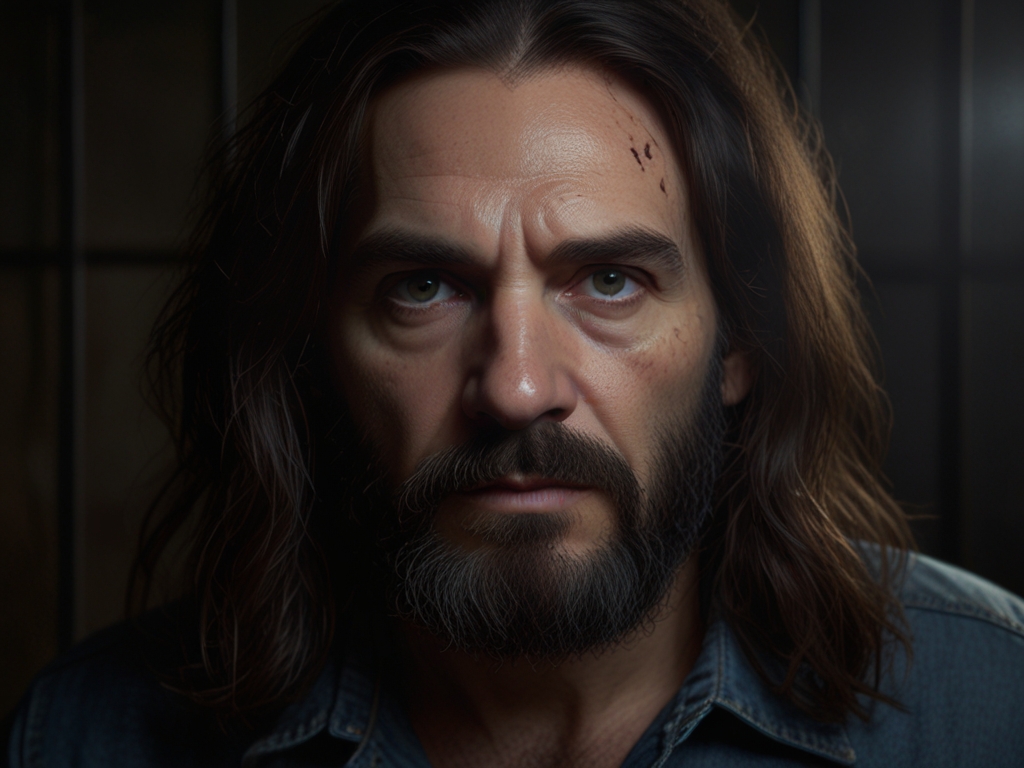In the heart of America’s free-spirited 1960s, amid music festivals and peace movements, an unthinkable darkness brewed. It came not with thunder, but with charm and promises of spiritual awakening. Charles Manson — a man with no weapons of his own — orchestrated some of the most brutal murders in modern U.S. history. His cult, known as The Manson Family, wasn’t just a group of followers, but a twisted reflection of blind faith, manipulation, and violence.
This blog takes you deep into the complete timeline of Charles Manson’s journey, his cult’s beliefs, horrific crimes, the pursuit of justice, and the cultural scars left behind. If you’re a true crime enthusiast or just curious about how charisma can turn deadly, read on.
☠️ Cult Name + Full History: Who Was Charles Manson?

The Troubled Beginning (1934 – 1967)
Charles Milles Manson was born on November 12, 1934, in Cincinnati, Ohio, to a teenage mother. Abandoned by his father and neglected throughout childhood, Manson was raised in a broken home. By his teen years, he was already engaging in petty crime and spent much of his youth in reformatories and prisons.
By the mid-1960s, newly released from prison, Manson arrived in San Francisco during the peak of the counterculture movement. Here, his ability to attract followers became clear. Using elements of spirituality, music, free love, and LSD, Manson formed a “family” — a cult-like group of mostly young, disillusioned women and men.
The Spahn Ranch Era (1968)
The Manson Family settled at Spahn Ranch, an abandoned Western movie set near Los Angeles. George Spahn, the blind owner, allowed them to stay in exchange for labor and companionship. Here, Manson began crafting his apocalyptic vision.
🙏 Beliefs & Structure: The Doctrine of Doom
Manson taught that an impending race war, which he called “

“ (named after a Beatles song), would soon destroy the existing order. According to him:
- Black Americans would rise up and defeat the whites.
- The Manson Family would hide in the desert, survive the chaos, and re-emerge as rulers.
Manson’s followers believed he was either Christ reincarnated or a divine prophet. The group had no formal structure but operated through:
- Total obedience to Manson
- Communal living
- Drug-induced rituals
- Isolation from the outside world
🔥 Notorious Crimes: The Summer of Terror (1969)
The Tate Murders (August 8-9, 1969)
Under Manson’s orders, Tex Watson, Susan Atkins, Patricia Krenwinkel, and Linda Kasabian entered the Los Angeles home of actress Sharon Tate, the pregnant wife of director Roman Polanski. Inside, they brutally murdered:
- Sharon Tate (8 months pregnant)
- Jay Sebring (celebrity hairstylist)
- Abigail Folger (coffee heiress)
- Wojciech Frykowski (Polish screenwriter)
- Steven Parent (a visitor)
Walls were smeared with blood, spelling words like “PIG” to mimic revolutionary messaging.
The LaBianca Murders (August 10, 1969)
The following night, Manson selected a new target: Leno and Rosemary LaBianca, a wealthy couple in Los Feliz. Tex, Krenwinkel, and Leslie Van Houten carried out the murders, again writing phrases in blood like “Healter Skelter.”
These murders were intended to incite the race war Manson prophesied, with the hopes that Black Americans would be blamed.
🚨 Law Enforcement Actions: How Justice Caught Up
Initially, the Tate and LaBianca murders weren’t connected. But when Susan Atkins bragged in jail about her role in the crimes, police began unraveling the full story. Linda Kasabian, who had acted as a getaway driver, turned state witness, offering detailed testimony.
In 1971, Manson and key followers were convicted:
- Charles Manson – Life imprisonment (originally sentenced to death)
- Susan Atkins, Patricia Krenwinkel, Leslie Van Houten – Also life sentences
- Tex Watson – Tried separately, received life in prison
Their death sentences were commuted in 1972 when California abolished the death penalty.
👥 Survivor Stories: Echoes of the Family
While most followers were convicted or scattered, a few broke away before the murders. Dianne Lake, recruited at just 14, later testified against Manson. Her memoir revealed years of emotional and sexual manipulation.
Long after the headlines faded and the courtroom doors slammed shut, the haunting legacy of the Manson Family lived on — not just in crime documentaries or newspaper clippings, but in the memories of those who survived its grip.
Dianne Lake: The Youngest Manson Family Member
At just 14 years old, Dianne Lake became one of the youngest members of the Manson Family. Raised by counterculture parents who embraced free love and LSD, Dianne was vulnerable, searching for acceptance and belonging. Manson offered her both — at a steep cost.
Lake was subjected to emotional manipulation, psychological control, and sexual exploitation. Manson, more than twice her age, treated her as both a “child” and “property.” Isolated from her family and society, she lived under the delusion that she was part of something greater.
Years later, Dianne testified bravely during the trials, helping to put Manson and his followers behind bars. Her memoir, Member of the Family, offers a first-person account of the confusion, coercion, and eventual clarity that emerged from her time in the cult. Today, she is a mother, teacher, and advocate for understanding how cults operate and how survivors recover.
“He stole my soul, but I got it back.” — Dianne Lake
Linda Kasabian: The Key Witness with a Heavy Conscience
Perhaps the most controversial survivor, Linda Kasabian never committed murder — but she was there. On both nights of the Manson murders, she acted as the getaway driver and lookout. According to her testimony, she never harmed anyone and even tried to stop the violence at one point.
When the law came calling, Linda flipped. She became the prosecution’s star witness, offering detailed testimony that mapped out exactly how the murders unfolded. Her cooperation was essential in securing Manson’s conviction.
But freedom came with a price. Kasabian lived the rest of her life in obscurity, changed her name, and carried deep remorse for the lives lost. In interviews years later, she appeared fragile, solemn, and reflective — a woman haunted not by what she did, but what she couldn’t stop.
“I was so full of guilt. I wanted to die.” — Linda Kasabian
Catherine “Gypsy” Share: Redemption After the Darkness
Another Manson follower who turned away was Catherine Share, also known as “Gypsy.” Though not involved in the Tate–LaBianca murders, Share was deeply embedded in the cult and even participated in later attempts to intimidate witnesses during the trial.
She later served time for her actions but eventually rebuilt her life, speaking publicly about how manipulation and mind control worked inside the Family. Today, she advocates for cult awareness, urging families to look for signs when loved ones begin to isolate or exhibit radical personality shifts.
The Hidden Trauma of the “Lesser-Known” Survivors
Beyond these three, many other survivors emerged from the Manson Family — unnamed, unknown, and forever scarred. Some slipped back into society quietly. Others battled addiction, PTSD, and homelessness. A few died young, their lives never fully escaping the orbit of Spahn Ranch.
Their stories remind us that cult trauma doesn’t end with a prison sentence — it lingers in memories, nightmares, and the hard road to recovery.
Why Their Voices Matter
The Manson Family survivor stories are not just tragic footnotes — they are living testimonies of how vulnerable minds can be warped, how loyalty can be weaponized, and how recovery is possible, even after unimaginable darkness.
In a media landscape often obsessed with villains, it’s crucial to amplify the voices of those who escaped — those who now help others recognize the warning signs, heal from cult abuse, and speak truth to manipulation.
🎥 Media Portrayal: From Horror to Hollywood
The Manson case became a cultural obsession:
- Books: Helter Skelter by prosecutor Vincent Bugliosi became a bestseller.
- Films: Tarantino’s Once Upon a Time in Hollywood (2019) imagines an alternate ending.
- Documentaries: Countless series and true crime specials dissect Manson’s psychology and legacy.
His image — wild hair, swastika on forehead, piercing eyes — became symbolic of evil.
⚠️ Warnings & Patterns: The Psychology of Cult Control
The Manson Family case is now studied as a textbook example of how:
- Charisma + isolation + drugs = total control
- Vulnerable individuals can be radicalized with ideological manipulation
- Societal neglect and disconnection can lead people to seek “family” elsewhere
Modern cult-watch organizations still use Manson’s tactics as a warning sign.
Legacy: What Remains After the Horror
Charles Manson died in prison in 2017 at age 83. Yet his influence still lingers in pop culture, criminal psychology, and America’s collective fear of what happens when belief turns violent.
As of 2023, Leslie Van Houten was granted parole, reigniting debates over redemption and justice. Manson’s crimes remain a chilling reminder of how charisma can be weaponized.
Final Thoughts
The story of Charles Manson is not just about murders — it’s about how a failed musician and career criminal turned peace-loving youth into executioners. It teaches us that evil doesn’t always come with a warning sign. Sometimes, it comes wearing a smile, playing guitar, and promising love.
Stay aware. Stay critical. Stay safe.
Frequently Asked Questions (FAQs) About Charles Manson & The Manson Family
❓Who was Charles Manson?
Charles Manson was a convicted criminal and cult leader who led The Manson Family, a group that carried out multiple brutal murders in 1969 under his direction. He claimed to be a messianic figure and manipulated followers through drugs and apocalyptic ideologies.
❓What was the Manson Family cult?
The Manson Family was a commune and cult founded by Charles Manson in the late 1960s. Made up primarily of young women, the group believed in Manson’s prophecy of a race war called “Helter Skelter” and followed his every command—including murder.
❓What does “Helter Skelter” mean in the Manson case?
“Helter Skelter” was Manson’s term for an imminent apocalyptic race war. He borrowed the phrase from a Beatles song and believed the murders would help spark societal collapse, positioning his followers as future leaders.
❓Who were the victims of the Manson Family murders?
Victims included Sharon Tate (actress and wife of Roman Polanski), Jay Sebring, Abigail Folger, Wojciech Frykowski, Steven Parent, and Leno & Rosemary LaBianca. These killings occurred over two nights in August 1969 in Los Angeles.
❓Was Charles Manson present at the murders?
No, Manson did not physically participate in the murders. However, he ordered and orchestrated them, which led to his conviction for conspiracy to commit murder.
❓How was Charles Manson caught?
Manson and his followers were caught after Susan Atkins, one of the cult members, confessed to a fellow inmate. Linda Kasabian later testified in court, revealing the inner workings of the cult and the crimes committed.
❓What happened to the Manson Family members?
Key members like Susan Atkins, Patricia Krenwinkel, Leslie Van Houten, and Tex Watson received life sentences. Charles Manson was also sentenced to life and died in prison in 2017. Van Houten was granted parole in 2023.
❓Are there any survivors from the Manson Family?
Yes, individuals like Linda Kasabian and Dianne Lake survived and later spoke out. Kasabian testified against Manson and lived in anonymity, while Lake wrote a memoir detailing her experience.
❓Why is the Manson case still relevant today?
The Manson case is studied in psychology, criminology, and sociology for its insight into cult behavior, manipulation, and radicalization. It also serves as a cautionary tale about the dangers of blind faith and groupthink.
❓How has the media portrayed Charles Manson?
Manson has been portrayed in countless books, films, and documentaries. Notable examples include Helter Skelter (book and film), Once Upon a Time in Hollywood by Quentin Tarantino, and numerous true crime series.


